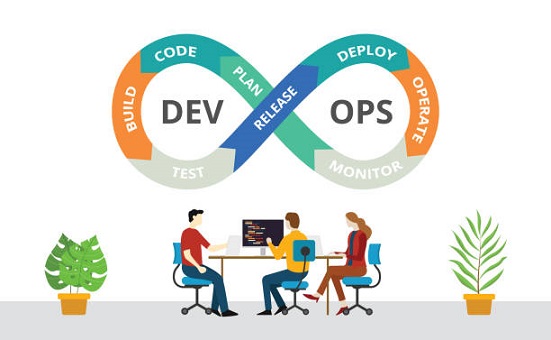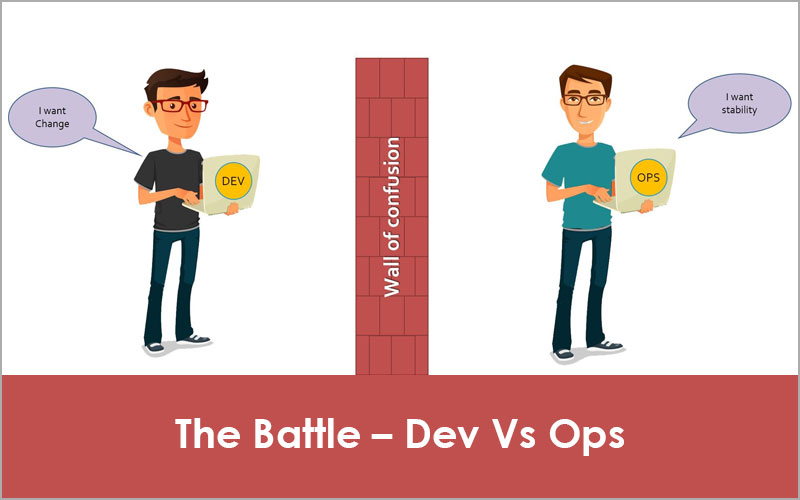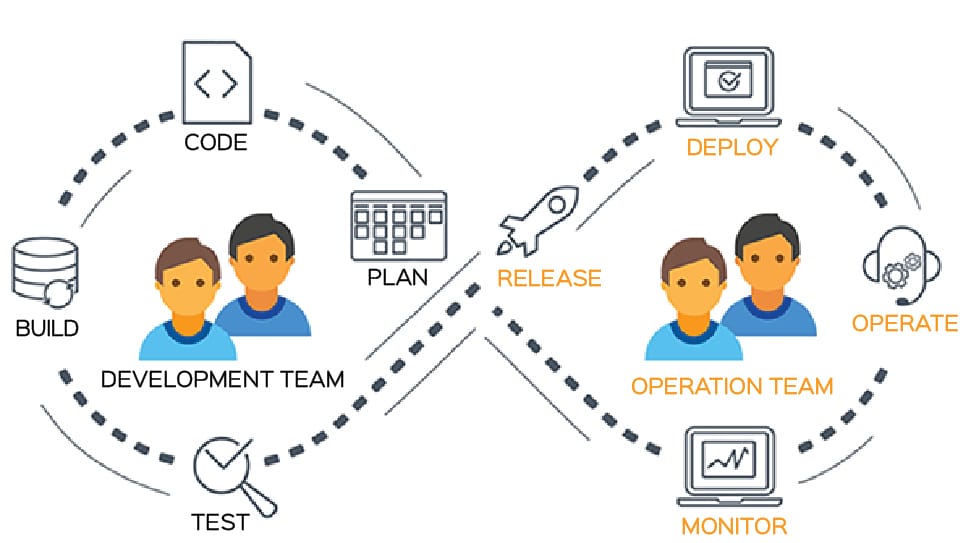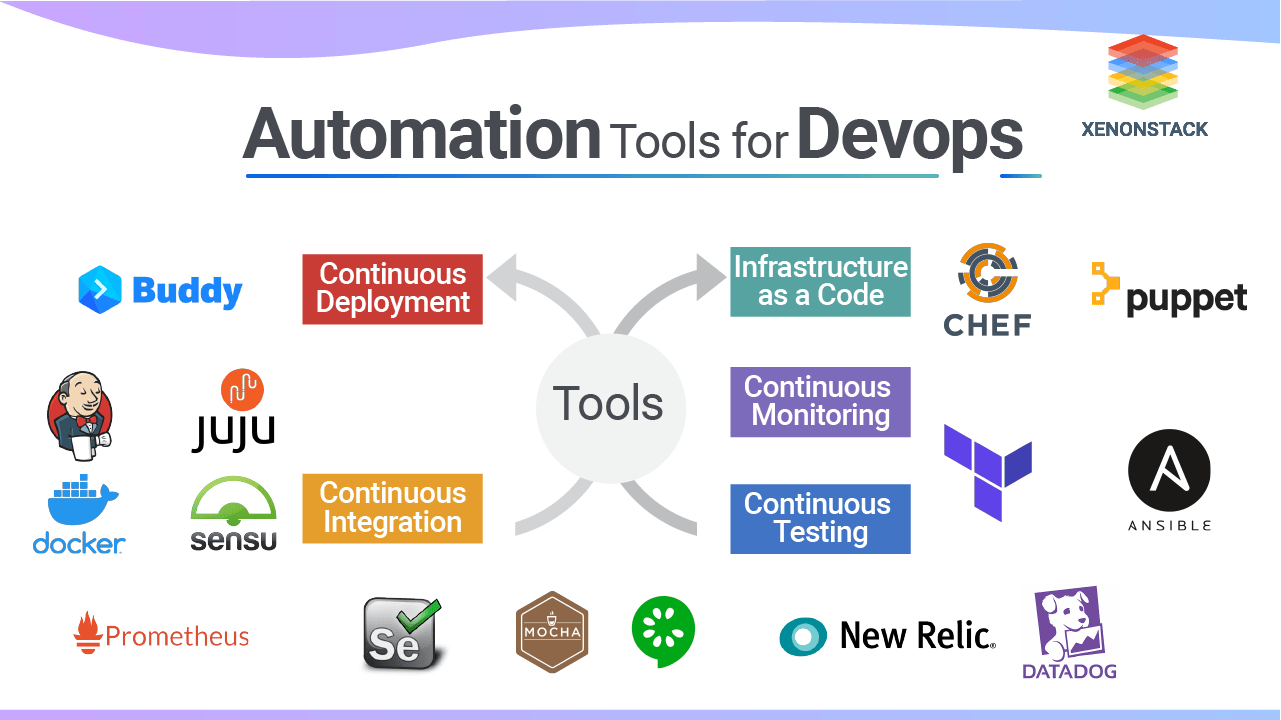Day-1 Introduction To DevOps
 Tejaswi Kadam
Tejaswi Kadam
What is DevOps?
Before we delve deep into the topic, we need to understand what DevOps is. Initially, the operations team and the development team worked independently. Deployment and testing were separate phases that were taken up after the activities of design and build. Before the advent of DevOps, the team members used to spend a lot of time in activities like designing, testing, etc. rather than creating business services. Not being in synchronization with one another, the development and operations teams had their separate timelines, which would lead to delays. DevOps helped to bridge this gap.

Without DevOps
The Development team works on code which is then sent to the testing team for validation against requirements. The operation team comes in toward the end of the process, where the handover of release is given that's why In traditional software development models, the development and operations teams often worked in silos, resulting in delays and miscommunications.
DevOps aims to break these silos enabling better collaboration and performance.

With DevOps
The Development and Operations teams work in collaboration to minimize the effort and risk involved in releasing software. But how do you ensure collaboration? This is the question faced by many organizations. Well, you can introduce collaboration by ensuring that the Operations team is giving constant feedback to the Development team about the code, analyzing the impact considering end users and troubleshooting any problems together to gain stability of the product.

DevOps enables a cultural change to remove the barrier between development and operations, working together for a common set of objectives.
Here is the Actual collaboration LifeCycle of the Dev (Development) and Ops (Operation) team
Development and Operations are two sides of an equation, each holding its roles and responsibilities. DevOps doesn’t mean eliminating some of the Ops roles; rather about breaking silos between Dev and Ops, encouraging collaboration and effective communication throughout the product lifecycle.
In simple terms, DevOps can be understood as a collaborative effort that helps to bring about a collaboration between IT operations and Development in a way that is repeatable and automated. It helps to boost the speed of the organization to deliver services and software applications.

DevOps is a culture where the development team (Dev) and operations team (Ops) combine to unite people, processes, and technology in application planning, development, delivery, and operations. DevOps enables coordination and collaboration between formerly siloed roles like development, IT operations, quality engineering, and security.
It promotes a culture of collaboration and communication, enabling faster delivery of high-quality software, responding better to customer needs, and achieving business goals faster while maintaining operational stability and efficiency
Why DevOps is Important?
DevOps is important because it's a software development and operations approach that enables faster development of new products and easier maintenance of existing deployments
DevOps Goals and Benefits
Following are some important goals and benefits of DevOps.
When a team adopts DevOps culture, practices, and tools, they can achieve amazing things:

1 . Accelerate time to market

Faster Delivery and Time-to-Market – DevOps practices enable quicker software releases, allowing your organization to respond more effectively to market changes and customer demands.
2. Adapt to the market and competition

A DevOps culture demands teams have a customer-first focus. By marrying agility, team collaboration, and focus on the customer experience, teams can continuously deliver value to their customers and increase their competitiveness in the marketplace.
3 . Maintain system stability and reliability

By adopting continuous improvement practices, teams can build increased stability and reliability of the products and services they deploy. These practices help reduce failures and risk
Improved Quality and Reliability – Through automation, continuous integration, and testing, DevOps helps ensure that the software delivered is of high quality, reliable, and secure.
4 . Improve the mean time to recovery

The mean time to recovery metric indicates how long it takes to recover from a failure or breach. To manage software failures, security breaches, and continuous improvement plans, teams should measure and work to improve this metric.
5 . Cost Savings

By reducing the time spent on manual tasks and streamlining workflows, DevOps can lead to significant cost savings for your organization.
6 . Increased Customer Satisfaction

With faster delivery and higher-quality products, your organization can better meet customer expectations, resulting in increased satisfaction and loyalty.
7 . Enhanced Collaboration and Communication

DevOps boost a culture of open communication and collaboration, breaking down silos between teams and leading to better alignment, shared goals, and more efficient processes.
What is DevOps automation?
DevOps automation is the practice or discipline of using specialized software tools and methodologies to automate repetitive and manual tasks throughout the software development lifecycle
Examples of automation in DevOps include: Infrastructure-as-Code tools can automatically configure software environments based on configuration management files created beforehand**.** Release automation suites can build, test and deploy new versions of an application.

Benefits of DevOps automation.
Automation delivers a range of benefits that make it easier to achieve the goals of DevOps.
Consistency
When processes are highly automated, they are also consistent and predictable. A software automation tool will always do the same thing until it is reconfigured to do otherwise. The same is not true for manual processes prone to human error.
Speed
Automation means that processes like code integration and application deployment happen faster. This is true for two main reasons.
First, there is no need to wait on a human to be ready before a process can start. Manually deploying a new release at 2 a.m. may not be possible when you rely on a human to execute the process. With automation tools, there is no delay.
Secondly, automated processes tend to be executed faster. An engineer who is manually deploying a new release will need to assess the environment, type out configurations, manually verify that they deployed the latest version successfully, and so on. In contrast, an automation tool can perform these operations almost instantaneously.
Scalability
Automation is the mother of scalability. Often, processes that are feasible to manage by hand cannot be performed manually at scale.
For example, you may be able to deploy new releases manually when you are dealing with only one application and one production environment. But when your team is managing multiple applications and is deploying to multiple environments (such as more than one cloud or different operating systems), your ability to release new code quickly and consistently becomes very difficult.
What is Scaling in DevOps?
A scalable DevOps means the system can expand automatically during a high workload and shrink back when the needs are reduced to normal.
Scalability refers to the ability of the business to set up its systems to grow during times of high demand and scale back when demand decreases. The optimum environment for achieving the appropriate level of scalability is DevOps, thanks to specific techniques

Scalability is one of the top priorities for businesses. Why? Because scalability is another word for growth. An enterprise that can scale consistently is one with great growth potential.
Furthermore, scalability means that the enterprise can configure its systems to expand during high demand and scale down when demand falls.
Certain practices in DevOps make it the ideal area to achieve the desired level of scalability. These practices include an opportunity for communication, faster performance orientation, increased innovation opportunities, and faster software releases.
What is Infrastructure in DevOps?
DevOps infrastructure or Infrastructure Automation under DevOps refers to a concept that revolves around the idea of managing infrastructure with the help of code. This is done with the help of certain tools or programs which can help to carry out the tasks automatically! Some of the leading IAC tools are listed below.
Ansible
Terraform
SaltStack
CloudFormation
Azure Resource Manager
SpectralOps
Why Use DevOps in Infrastructure?
DevOps helps in the automation of infrastructure. This enables the operations team and the developers to manage, facilitate, and monitor the resources automatically. This saves the hassle and effort of having to do everything manually, which can slow down the process and cause an organization to function inefficiently.
Since the infrastructure is automated, the DevOps teams can test the applications very early during the development cycle. This allows the provision for multiple environments for testing and helps to keep at bay the common issues related to deployment.
Listed below are some of the benefits of using DevOps in infrastructure:
Predictability: With the help of DevOps, there will be a relatively lower rate of failure of the new releases. This is because the products will be tested at the initial stage itself.
Better Quality: DevOps helps the teams to come up with improved and better quality applications by considering the infrastructure issues.
Error elimination and reduced time for recovery: The practices put to use by DevOps are ideally suited for eliminating the impact of rollbacks, bottlenecks, or deployment failures that might affect efficiency. When these issues are addressed at an early stage, they can be lived through easily. Quick detection of errors eases the process for both the operations as well as the developer’s teams.
Reduced marketing time: Since DevOps streamlines the procedure of software delivery, the process of marketing can be made quicker.
Subscribe to my newsletter
Read articles from Tejaswi Kadam directly inside your inbox. Subscribe to the newsletter, and don't miss out.
Written by
